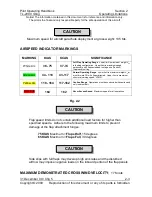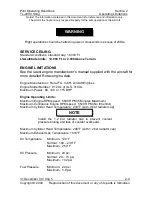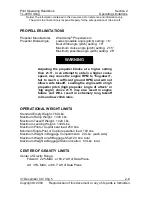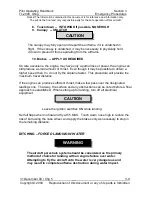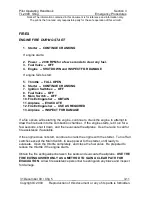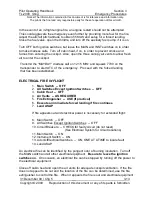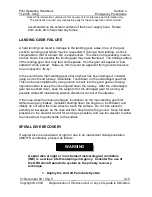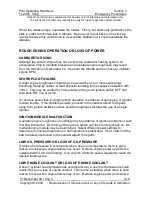
Pilot Operating Handbook
Section 3
TL-2000
Sting
Emergency Procedures
Notice! The information contained in this document is for reference and information only.
The pilot is the final and only responsible party for the safe operation of this aircraft.
31 December 09 / Chg 5
__
3-4
Copyright © 2009 Reproduction of this document or any of its parts is forbidden.
The items discussed in each amplified procedures are informational.
None of these items or procedures are intended to replace properly
qualified ground or in-flight instruction by an FAA certified flight
instructor (CFI).
AIRCRAFT PARACHUTE SYSTEM
Do not operate this aircraft in IMC conditions!
Operation under IMC
conditions is considered
The aircraft parachute system should be
considered as the primary method of choice of recovery when the
aircraft has departed controlled flight (out of control).
The Sting comes standard with an aircraft parachute system manufactured by the
Galaxy
®
High Technology (GRS) Corporation. It is imperative that the owner/pilot of
this airplane read and understand the system operating manual provided by Galaxy
®
.
In most emergency scenarios, the use of the system is not necessary. The
parachute system will increase the chance of occupant survival at the cost of
substantially damaging the airframe. If the system is used, certain steps should at
least be attempted prior to activation:
Turn off the ignition to stop the engine propeller. If the aircraft has departed
controlled flight and the prop is stopped there is less risk of damaging or hindering
the parachute deployment.
Tighten the seat belts and shoulder harnesses before activating the system.
As much as 5.5 Gs may be experienced during the chute inflation process,
depending on the flight parameters.
1. Slow the Aircraft, If Possible
2. Ignition -- OFF
3. Harnesses -- TIGHTEN
4. Parachute Activation Handle -- PULL FIRMLY (25 POUNDS)
5. Radio -- SET TO 121.5. TRANSMIT “MAYDAY, MAYDAY, MAYDAY!”
with AIRCRAFT ID and CURRENT POSITION
6. Transponder -- SET TO 7700
7. Impact Position -- PULL LIMBS CLOSE TO BODY and COVER FACE
NOTE
WARNING
WARNING






